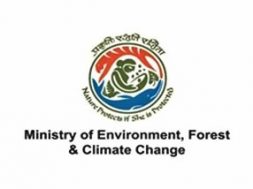
India’s renewable energy targets on track, needs to become people’s cause: Minister Pralhad Joshi – EQ
In Short : India is on track to meet its renewable energy goals, aiming for 500 GW of capacity and sourcing 50% of its energy from renewables by 2030, according to Union Minister Pralhad Joshi. However, he stressed the need for renewable energy to become a people’s movement to ensure widespread adoption. Key challenges include land acquisition for projects, but progress is being made in areas like solar, wind, and green hydrogen development.
In Detail : The Union minister, speaking at the India Today Energy Conclave, emphasised on a gradual transition to renewables, balancing current needs with future sustainability.
India is steadily progressing towards its ambitious renewable energy goals, Union minister of new and renewable energy Pralhad Joshi stated at the India Today Energy Conclave in New Delhi last week.
“Energy security is paramount, and we must shift to renewable energy in a phased manner,” Joshi remarked during a discussion with Raj Chengappa, India Today Group editorial director (publishing). He emphasised that with India’s energy demand expected to double by 2040, it is crucial to transition gradually, balancing current needs with future sustainability. “We cannot transition all of a sudden. The world cannot shift overnight. By 2070, we aim to achieve net-zero emissions, but it is critical to do so while ensuring energy security.”
India has set a bold target of 500 gigawatts (GW) of renewable energy capacity and sourcing of 50 per cent of its energy from renewables by 2030. Reflecting on the progress made, Joshi said: “Before 2014, we had a total renewable energy capacity of just 75 GW. Today, it has increased to 203 GW, and we are confident of reaching our 2030 target.”
Joshi revealed that an additional 80 GW was in the pipeline, with 14 GW added in just the first half of 2023. He attributed this success to the government’s proactive policies, including annual bids for at least 50 GW of renewable energy projects. “Our department and implementing agencies are continuously collaborating with state governments to ensure consistent progress,” he said.
However, the minister stressed that the shift to renewable energy cannot rely solely on government efforts. “It is essential for renewable energy to become a people’s movement,” he urged, highlighting initiatives like the PM Surya Ghar Yojana and the PM-KUSUM scheme, which aim to promote solar energy adoption in rural areas.
Joshi acknowledged that some states were struggling to meet their renewable purchase obligations due to political challenges. “Certain states are falling short of their targets for political gains,” he noted, but added that the central government was working closely with state regulators to ensure compliance. He urged states to capitalise on government subsidies for rooftop solar projects, emphasising on the financial benefits of generating surplus energy.
One of the most significant hurdles in expanding renewable energy capacity is land acquisition, especially for solar and wind projects. “We are continuously engaging with state governments to resolve land issues, and we hope to see substantial progress,” Joshi said. He also mentioned India’s untapped potential in offshore wind energy, with plans to develop 37 GW of capacity in the sector.
Discussing India’s National Green Hydrogen Mission, aimed at positioning the country as a global leader in green hydrogen production, Joshi said: “We are on track to meet our green hydrogen goals; by 2030, we will have the necessary infrastructure to produce and transmit green hydrogen across the country.” Significant resources have already been allocated for electrolyser production and capacity development, with progress nearing its final stages.
When asked about reducing dependence on China for renewable energy components, Joshi noted that India has made significant strides. “Earlier, we had to import everything. Now, we manufacture a significant portion of the modules domestically,” he said. Although certain materials, such as silicon wafers, are still imported, the government is actively promoting domestic production to further reduce imports.
Joshi also highlighted India’s progress in biofuel production, particularly ethanol blending. Since 2014, ethanol blending has increased from less than 2 per cent to 20 per cent in 2023, with the goal of reaching 25 per cent by 2026. “We are working closely with NITI Aayog to develop policies that promote biofuels and reduce pollution,” he said, noting that India’s ethanol journey began during the Atal Bihari Vajpayee government but had stalled after the first National Democratic Alliance (NDA) government.
Energy storage, however, remains a pressing challenge for the renewable sector. “While we are advancing on pumped storage projects, much more needs to be done in battery storage, especially with lithium-ion batteries,” Joshi explained. The government is also exploring opportunities to secure critical minerals like lithium and cobalt from countries with abundant reserves. “This is not just a government initiative. It is a mission for future generations, and every citizen must be a part of it,” he said.










